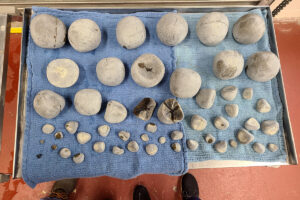Has Your Horse Been Exposed to a Parasite That Causes EPM?

This serious neurologic disease of horses primarily caused by Sarcocystis neurona, a protozoan parasite that invades the brain, brainstem, and spinal cord. Another protozoan parasite, Neospora hughesi, is a less common cause of EPM.
One study indicates that, overall, 78% of U.S. horses have antibodies against S. neurona and 34% have antibodies against N. hughesi. However, less than 1% exposed to EPM will develop clinical signs.
S. neurona is spread to horses from a definitive host, in this case, an opossum. Horses become infected with EPM through contact with opossum feces through grazing or contaminated feed. The definitive life cycle of N. hughesi is not yet fully understood
Create a free account with TheHorse.com to view this content.
TheHorse.com is home to thousands of free articles about horse health care. In order to access some of our exclusive free content, you must be signed into TheHorse.com.
Start your free account today!
Already have an account?
and continue reading.
Related Articles
Stay on top of the most recent Horse Health news with
















